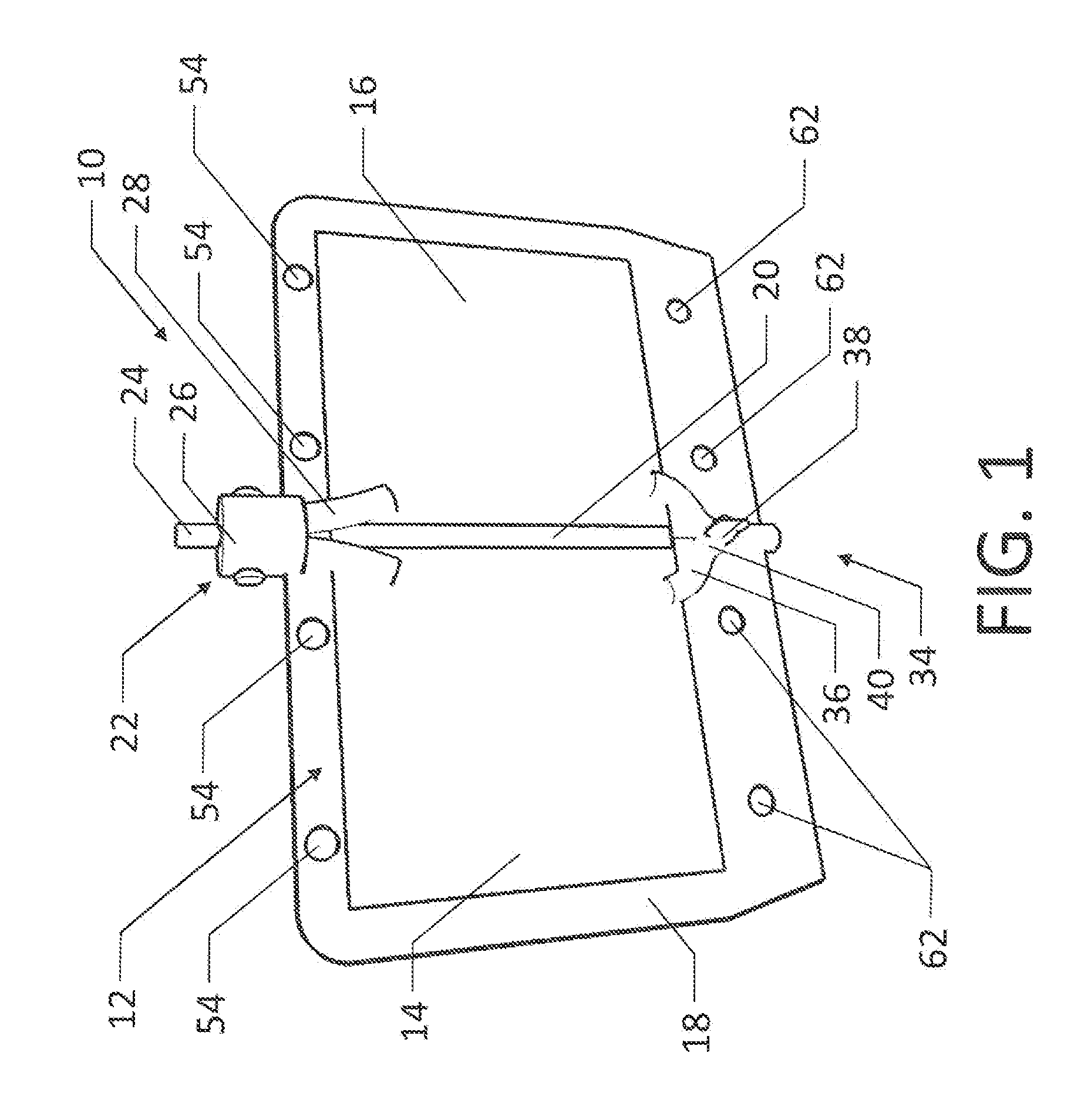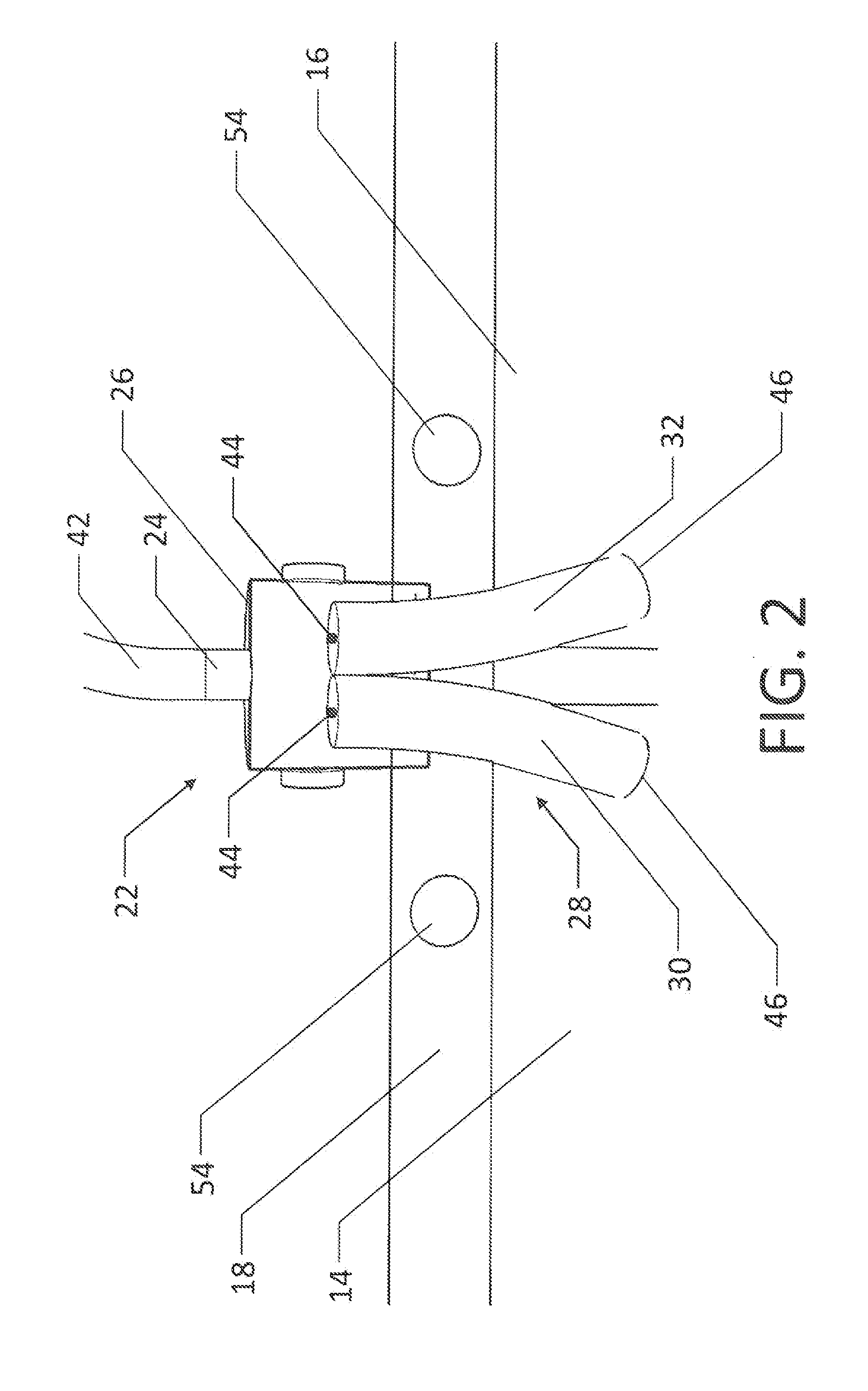Selective-Capacity Bodily Fluids Collection and Drainage Device
a technology of bodily fluids and devices, applied in gravity drainage systems, other nursing devices, medical science, etc., can solve the problems of user exposure to a high risk of infection, soiling of the user's clothing or restroom, and difficulty in changing bags
- Summary
- Abstract
- Description
- Claims
- Application Information
AI Technical Summary
Benefits of technology
Problems solved by technology
Method used
Image
Examples
Embodiment Construction
[0033]FIG. 1 illustrates the present invention in the preferred embodiment. The collection and drainage device 10 is generally made up of multi-chambered collection container 12, common inlet chamber 22, and common outlet chamber 34. Multi-chambered collection container 12, common inlet chamber 22, and common outlet chamber 34 are housed in outer casing 18.
[0034]Multi-chambered collection container 12 generally comprises two collection chambers, first collection chamber 14 and second collection chamber 16, in the preferred embodiment. However, multi-chambered collection container 12 can comprise more than two collection chambers. First collection chamber 14 and second collection chamber 16 can be made up of any flexible material that is impervious to bodily fluids, such as plastic, and is capable of lying flat when empty, as shown in FIG. 1, and expanding when filled, as shown in FIG. 10 and FIG. 11. Returning to FIG. 1, first collection chamber 14 and second collection chamber 16 a...
PUM
 Login to View More
Login to View More Abstract
Description
Claims
Application Information
 Login to View More
Login to View More - R&D
- Intellectual Property
- Life Sciences
- Materials
- Tech Scout
- Unparalleled Data Quality
- Higher Quality Content
- 60% Fewer Hallucinations
Browse by: Latest US Patents, China's latest patents, Technical Efficacy Thesaurus, Application Domain, Technology Topic, Popular Technical Reports.
© 2025 PatSnap. All rights reserved.Legal|Privacy policy|Modern Slavery Act Transparency Statement|Sitemap|About US| Contact US: help@patsnap.com



